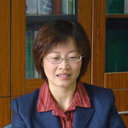[Interaction of anti-thrombotic and anti-inflammatory activities of commonly used traditional Chinese medicine for promoting blood circulation and removing blood stasis revealed by network pharmacology analysis].
Ključne riječi
Sažetak
Chinese traditional patent medicine for promoting blood circulation and removing blood stasis(PBCRBS) originated from traditional Chinese medicine theory and had approved efficacy and safety standards. However, its compatibility regularity and anti-thrombotic mechanism is not clear. To analyze the compatibility regularity and anti-thrombotic mechanism of Chinese traditional patent medicine for PBCRBS, a statistical and bioinformatics analysis was carried out using traditional Chinese medicine inheritance support system (TICMISS, V2.0) and ingenuity pathway analysis (IPA). The compatibility regularity analysis shows that the most commonly used herb combinations are Danshen (Salvia miltiorrhiza Bge.), Chuanxiong (Ligusticum chuanxiong Hort.) and Honghua (Carthamustinctorius L.). The anti-thrombotic mechanism analysis reveals that 25 ingredients have an effect on 29 thrombosis related molecules which 23 molecules are related to inflammation response. Furthermore, there are 5 inflammation molecules (NOS2, PTGS2, IL6, TNF, IL1β) served as major targets. At the same time, Danshen, Chuangxiong and Honghua mainly used as sovereign herb or minister herb in the application of cardiovascular and cerebrovascular diseases. Therefore, Chinese traditional patent medicine for PBCRBS probably has an effect on anti-thrombotic activity through inhibiting the inflammatory response. In summary, the most commonly used herb combinations of Chinese traditional patent medicine for PBCRBS are Danshen, Chuanxiong and Honghua. Inhibiting inflammatory response, especially inflammation related molecules (NOS2, PTGS2, IL6, TNF and IL1β), is probably a new starting point to clarify the anti-thrombotic mechanism of Chinese patent medicine for PBCRBS.



